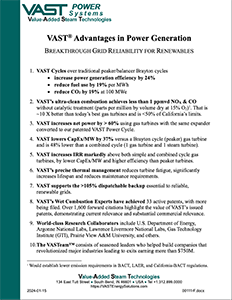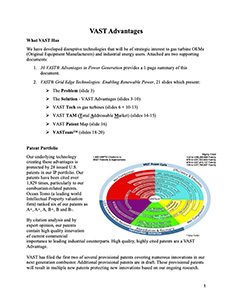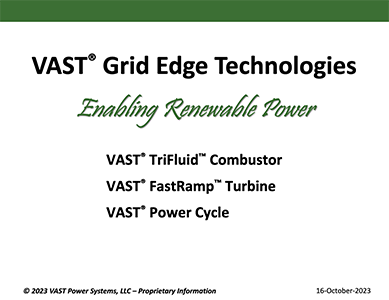Laymen’s Introduction
VAST is an acronym that stands for Value Added Steam Technologies. The VASTeam™ researches, designs, and develops new applications that use water, steam or other inert thermal diluent to cool combustion processes. We try to identify applications for VASTech™ that bring “added value” to the burning of fuels to create heat in industrial processes. Here is what our fundamental invention, the VASThermogenerator™, looks like in a cut-away version of a test unit.

What does a VASThermogenerator do? It burns a wide variety of fuels and injects water or steam into the hot combustion zone where the fuel is burning in order to cool the combustion zone and keep it from forming NOx or other emissions.
The water flashes to steam which combines with the products of combustion to form what we call VASTgas™. This hot energetic working fluid can then be used to spin a turbine, drive a piston, heat other fluids or gases, or as a steam source in certain applications such as Enhanced Oil Recoivery (EOR). VASTgas is composed of the nitrogen out of the air, N₂ plus the CO₂ from clean-burning of the fuel, plus a lot of steam. In some of our applications, there might be 6 times as much steam by mass as there was fuel burned! That’s a lot of water and the VASThermogenerator needs to be used within the patented VAST Wet Combustion Cycle™ to recapture the latent heat of vaporization – the energy that is required to convert water at 212℉ to steam at 212℉. When that energy is recovered by using our patented power cycle, a VASThermogenerator is actually more efficient for many real-world applications. In any case, it always does a great job of über-clean combustion.
Why doesn’t the VASThermogenerator create pollution like other combustors? Two reasons: water keeps the burning zone cool and the long combustion barrel provides sufficient combustion residence time to achieve full oxidation of the carbon in the fuel, first to CO and then on to CO₂. By keeping the temperature of the burning zone below 2,300℉, the VASThermogenerator minimizes the formation of nitrogen oxides, specifically NO, NO₂, or NO₃ collectively represented by NOx (“knocks”) which is a critical component of smog. Because fuel burns from 650℉ to around 4,000℉, there is a very wide range of temperatures (650℉ to about 2,300℉) at which a VASThermogenerator can completely burn fuel without creating a lot of NOx. The VASThermogenerator keeps its operating temperatures well within this low pollution range, thus never creating the pollutants that some post-combustion processes like expensive Selective Catalytic Reduction (SCR) add-ons would have to clean up.
Below is a flow diagram that shows how air, fuel, and water or steam are injected into the VASThermogenerator and how they burn from left to right. The result? Exhaust so clean you can breathe it!


A PDF of this page can be downloaded here:
Laymen’s Introduction to VASTechnology™
VAST Grid Edge Technologies and VAST Advantages
Wet Combustion
The VAST combustion technology is the core of many of the other VAST technologies. This

combustion process utilizes wet combustion but is able to go way beyond the conventional wisdom on the highest water/fuel or omega (ω) ratio possible and still have a stable reaction. Controlling the ω ratio and relative air to fuel, or lambda (λ), the ratio has given some surprising results:
- Simpler multifuel capabilities.
- ω ratio greater than 10:1 with stable reactions.
- Stable combustion below 700°C/1290°F.
- Controlled, cool, combustion at near stoichiometric.
- Emissions of NOX and CO below 1 part per million (ppm) when normalized at 15% O2.
- Quieter combustion.
Fluid Mixing
The VAST fluid mixing technology goes hand-in-hand with much of the other technology. Many hours of

research has been allocated to developing better mixing methods to:
- Mix several fluids.
- Increase combustion stability.
- Increase temperature and distribution control.
- Reduce emissions.
- Lower noise and vibration.
- Reduce pressure drop.
Wet Compression

To help improve the VAST Cycle technology, the VASTeam took a close look at the compression systems. A large portion of the energy produced by power cycles is used to drive the compressor and a large portion of the diluent or air that is compressed is often not even required for the combustion process but needed to keep things cool. Using fluid mixing, VAST has developed a compression system that:
- Increases compressor cooling.
- Reduces compressor work.
- Increases pressure ratios for the same thermal limits.
- Smaller compressor footprint.
- Injects water in each stage.
- Uses less air.
Power Cycles

The VAST Power Cycles incorporate wet combustion and water recovery and recycling to:
- Replace excess air with recycled water.
- Increase component life.
- Increase efficiencies.
- Improve economics.
- Increase net power.
- Lower emissions.
Through extensive modeling, VAST has been able to demonstrate that the VAST Cycles can achieve substantial benefits from distributed generation and combine heat and power (DG/CHP) to baseload applications. With specific designs, the VAST Cycles are excellent peaker plants in light of their ability to maintain good efficiencies over a broad range of loads.
For further information on power cycles:
Hydrocarbon Extraction

VAST currently holds several patents on hydrocarbon extraction technologies.
- Enhanced Oil Recovery (EOR) and Oil Sands Extraction
- Delivers exhaust heat, steam, and CO2 downhole.
- Uses distributed CO2 generation onsite via the combustion process.
- Recycles CO2 to achieve the desired concentration ratios.
- Compresses gas more efficiently.
- Improve use of CO2 and steam.
